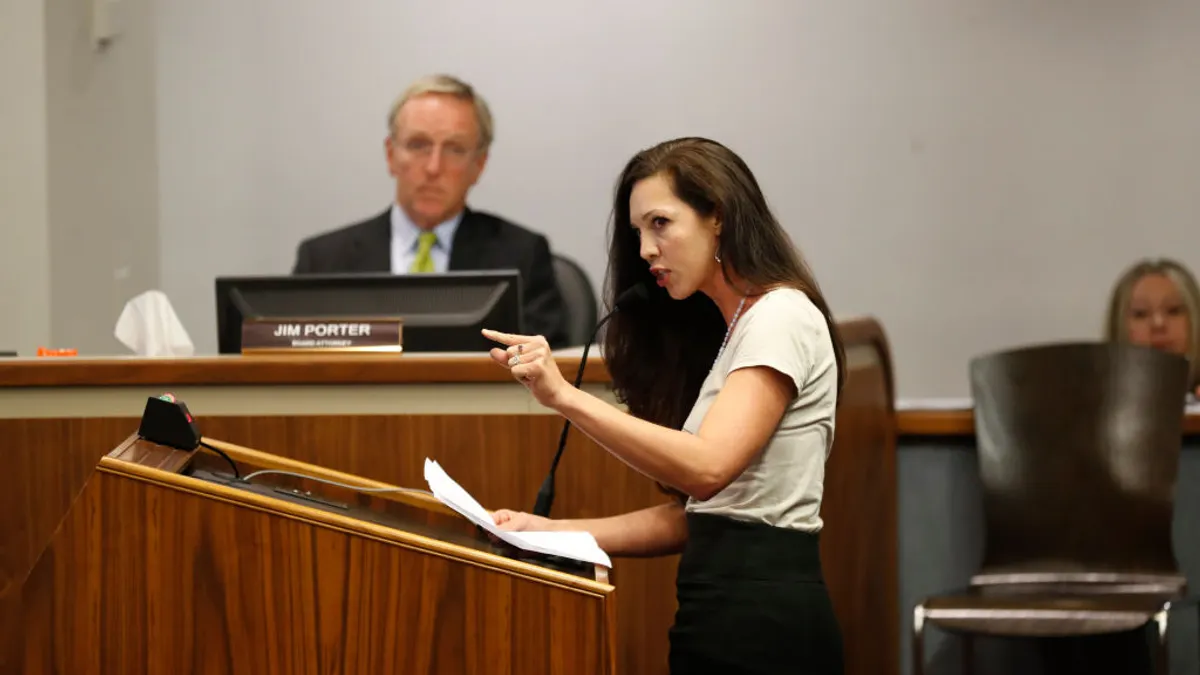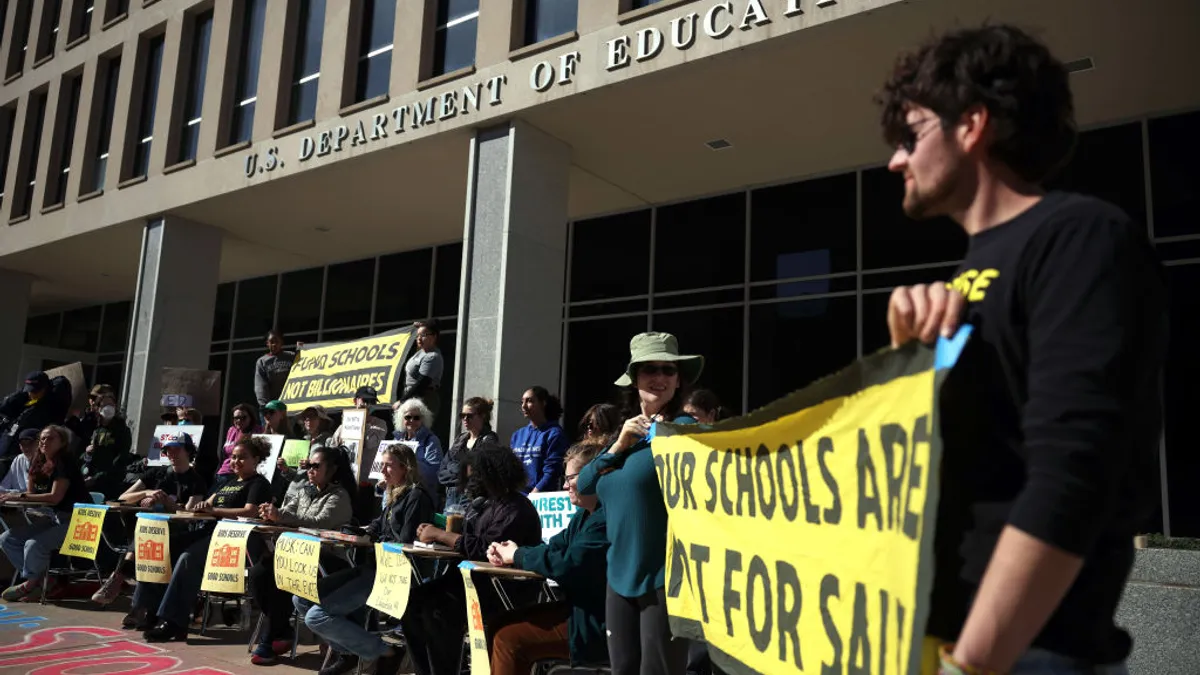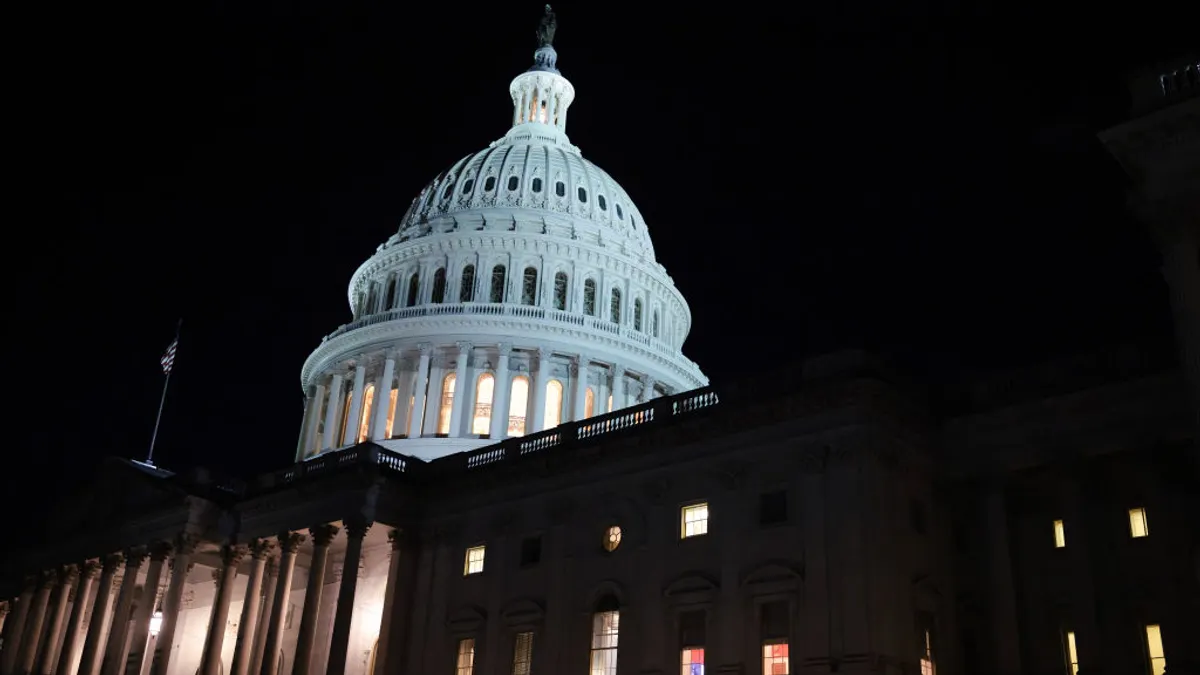School boards are diverging from the views of the communities they serve both in terms of being more critical of charter schools and in having a more positive view of their own district's performance, according to a report published Wednesday by the Thomas B. Fordham Institute and The Wallace Foundation.
The study, written by political scientists David Houston and Michael Hartney, also found that, demographically, school board members generally don't mirror the overall population in the U.S. For instance, 87% of school board members in 2023 were White, compared to only 59% of the nationwide population.
Additionally, school board members were more likely to hold postgraduate degrees (46% versus 14%) and to be a current or former teacher, 25% compared to 3% of the overall public.
The study's findings “reveal fundamental tensions at the heart of school governance, and they suggest that the nation’s most local form of democracy may, in important ways, be drifting out of step with its citizens," the report said.
The study examines survey responses from more than 5,000 board members in over 3,000 districts who were asked about their demographics, political views and attitudes toward key education issues. Those responses were compared to publicly available information on their school districts’ demographic characteristics and political leanings.
'A pretty weird political institution'
The paper calls school boards “a pretty weird political institution," because elections to boards are typically "depoliticized." They are often uncontested, nonpartisan and held at times during times of lower voter turnout, because they are often held separately from broader municipal, state, and federal elections, the report said.
To help local school boards better represent the communities they serve, the report suggests shifting more elections to November and to even-numbered years. It also recommends that candidates be more transparent about how they view their district's performance and what they think should be improved.
And once in the board seat, members spend most of their time discussing facilities management and labor issues, rather than academics — which would seem to be their top priority, the report said..
Yet, because there are more than 13,000 school districts, the U.S. has more school board members than any other group of elected leaders, the report said. Using data collected in 2022, by the America First Policy Institute and records from the National Center for Education Statistics, the study estimated there were 61,299 school board members nationwide.
And although school board elections are officially nonpartisan, board members’ political identities, in general, align closely with those of the general public. About 41% identify as Democrats, 47% as Republicans, and 12% as independents, which closely matches the U.S. public’s political demographics.
But when board members' political leanings are analyzed against the student enrollment they serve, there is more of a mismatch.
For example, enrollment-weighted estimates show that board members representing 55% of students identify as Democrats, those representing 35% of students identify as Republicans, and those representing 10% of students identify as independents.
The analysis also found that about 65% of school board members match the party affiliation of the majority of voters in their district. The data finds higher levels of alignment between boards and their communities when board members represent districts with larger enrollments.
Whether it's an advantage or disadvantage for school boards to mirror their electorate politically is "far from a straightforward question," according to the report.
"We contend that representation is one element of a broader conceptualization of board performance — one that has the potential, although not the assurance, to facilitate and advance other elements," the report said.
Differences of opinions
In addition to misalignment on political identities and demographics, there are also differences in opinions on educational issues, such as charter schools and the quality of their local school system.
For example, while 45% of U.S. adults support charter schools, only 29% of board members did so, the report found. Regarding transgender students participating in sports, 20% of U.S. adults are supportive compared to 30% of school board members.
And school board members were much more likely to give their local school an "A" or "B" grade, at 75% versus about 51% of U.S. adults overall.
The disconnect may be due to school board members' loyalty to the educational institution or because of their close working relationships with educators and administrators, the report said. It also suggested that overestimating the quality of their district could lead board members to fail to acknowledge an urgency for reforms.
"This grade inflation on the part of school board members is more than a psychological quirk. It is a governance challenge," the report said. "It raises the possibility that school boards are insulated from the very feedback loops that democratic accountability is meant to provide.”




















